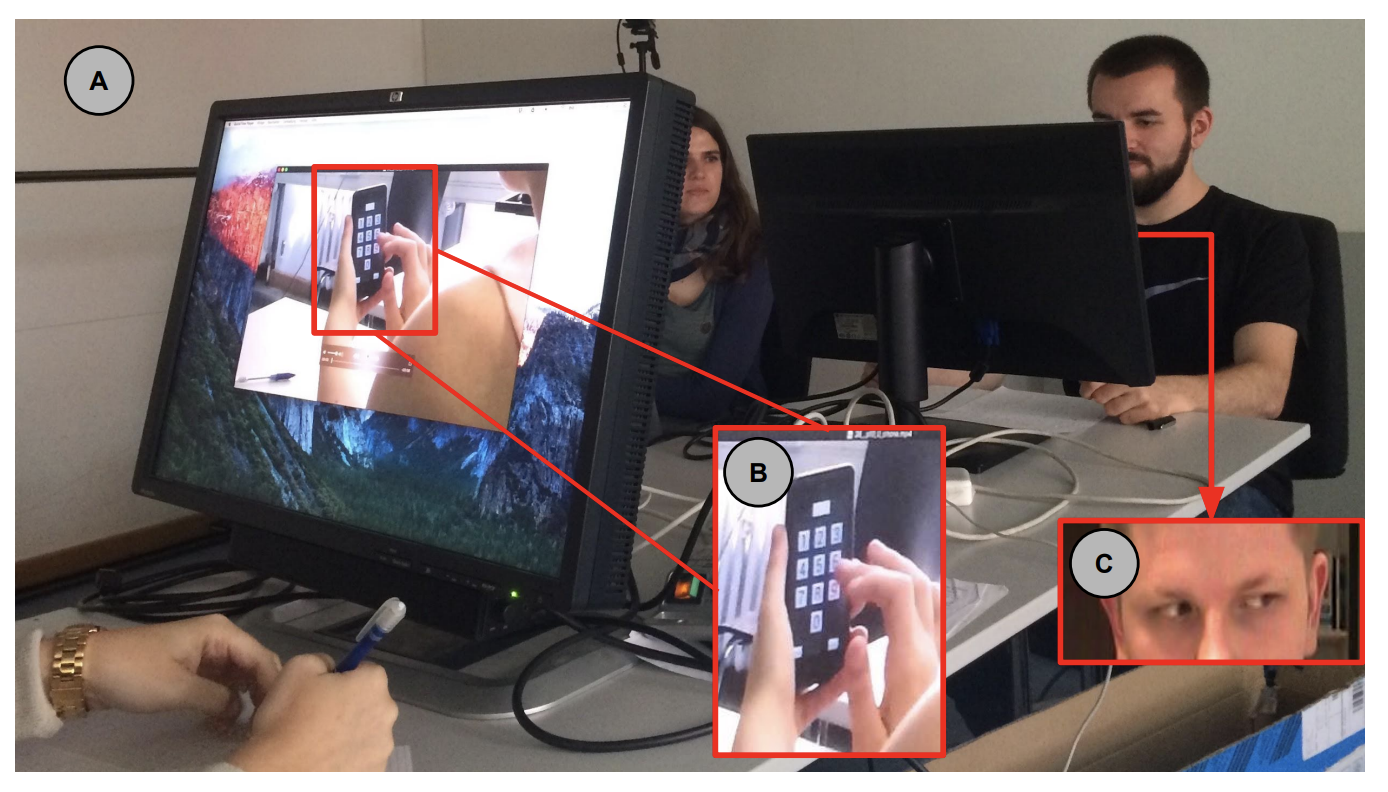They are all after you: Investigating the Viability of a Threat Model that involves Multiple Shoulder Surfers
Mohamed Khamis, Linda Bandelow, Stina Schick, Dario Casadevall, Andreas Bulling, Florian Alt
Proc. International Conference on Mobile and Ubiquitous Multimedia (MUM), pp. 1–5, 2017.
Best Paper Honourable Mention Award

Abstract
Many of the authentication schemes for mobile devices that were proposed lately complicate shoulder surfing by splitting the attacker’s attention into two or more entities. For example, multimodal authentication schemes such as GazeTouchPIN and GazeTouchPass require attackers to observe the user’s gaze input and the touch input performed on the phone’s screen. These schemes have always been evaluated against single observers, while multiple observers could potentially attack these schemes with greater ease, since each of them can focus exclusively on one part of the password. In this work, we study the effectiveness of a novel threat model against authentication schemes that split the attacker’s attention. As a case study, we report on a security evaluation of two state of the art authentication schemes in the case of a team of two observers. Our results show that although multiple observers perform better against these schemes than single observers, multimodal schemes are significantly more secure against multiple observers compared to schemes that employ a single modality. We discuss how this threat model impacts the design of authentication schemes.Links
Paper: khamis17_mum.pdf
BibTeX
@inproceedings{khamis17_mum,
title = {They are all after you: Investigating the Viability of a Threat Model that involves Multiple Shoulder Surfers},
author = {Khamis, Mohamed and Bandelow, Linda and Schick, Stina and Casadevall, Dario and Bulling, Andreas and Alt, Florian},
year = {2017},
doi = {10.1145/3152832.3152851},
pages = {1--5},
booktitle = {Proc. International Conference on Mobile and Ubiquitous Multimedia (MUM)}
}

